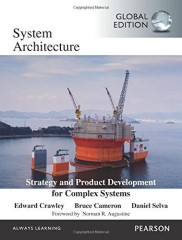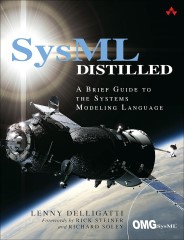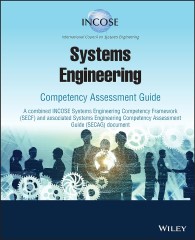In the complex world of systems engineering, success hinges on a clear understanding and meticulous management of project requirements. At the heart of this process lies a critical concept: the requirements baseline. This foundational element serves as the cornerstone for project development, guiding teams from initial conception through to final delivery.
A requirements baseline is defined as an agreed-upon, formally reviewed, and approved set of requirements that serves as the foundation for further system development and evaluation. It represents a snapshot of the requirements at a specific point in the project lifecycle, typically after the initial requirements elicitation and analysis phase. This baseline becomes the reference point against which all future changes are measured and managed.
The importance of a requirements baseline in systems engineering cannot be overstated. It provides a clear, unified vision of the project’s objectives, ensuring that all stakeholders are aligned in their understanding of what the system should accomplish. This shared understanding is crucial in preventing misinterpretations, reducing conflicts, and minimizing costly rework later in the project lifecycle.
Moreover, a well-established requirements baseline acts as a powerful tool for project management. It enables more accurate planning, facilitates effective change management, and provides a solid foundation for testing and validation. In essence, it serves as the project’s North Star, guiding decision-making processes and keeping the development on track.
As we delve deeper into the concept of requirements baselines, we will explore their key aspects, the numerous benefits they offer, the potential pitfalls of neglecting them, and their crucial role in change management. By understanding and leveraging the power of requirements baselines, systems engineers can significantly enhance project outcomes, leading to more successful and efficient system development.
Recommended Further Reading Amazon BooksTable of Contents
Key Aspects of a Requirements Baseline
A requirements baseline is more than just a list of system specifications; it’s a comprehensive, structured approach to documenting and managing project requirements. To fully grasp its significance and functionality, it’s essential to understand its key aspects:
Formal Approval
A requirements baseline is not an informal or preliminary document. It represents a set of requirements that have undergone rigorous review and received formal approval from key stakeholders. This approval process ensures that the baseline reflects a consensus view of what the system should achieve and how it should function.
Change Control
Once established, a requirements baseline is subject to strict change control procedures. Any modifications to the baseline must go through a formal change management process. This rigorous approach helps maintain the integrity of the requirements and ensures that all changes are properly evaluated, documented, and communicated.
Reference Point
The baseline serves as a critical reference point throughout the project lifecycle. It provides a snapshot of the agreed-upon requirements at a specific point in time, typically after the initial requirements elicitation and analysis phase. This reference point is crucial for measuring project progress, evaluating proposed changes, and ensuring that the final system aligns with the original intent.
Traceability
A key feature of a requirements baseline is its ability to support traceability. Each requirement in the baseline can be traced back to its origin (such as a stakeholder need or a regulatory requirement) and forward to its implementation in the system design. This traceability is vital for impact analysis, verification, and validation activities.
Consistency
The requirements baseline ensures consistency across all project teams and stakeholders. By providing a single, authoritative source of requirements information, it minimizes misunderstandings and conflicting interpretations. This consistency is crucial for coordinating efforts across different aspects of system development, from design and implementation to testing and deployment.
Understanding these key aspects of a requirements baseline is crucial for effective systems engineering. The baseline is not a static document but a dynamic tool that, when properly maintained and utilized, can significantly enhance project outcomes. It provides structure and clarity in the often complex and evolving landscape of system development, serving as a solid foundation upon which successful projects are built.
Recommended Further Reading Amazon BooksBenefits of Developing and Maintaining a Requirements Baseline
Implementing a robust requirements baseline offers numerous advantages throughout the lifecycle of a systems engineering project. Understanding these benefits can help organizations justify the effort and resources required to establish and maintain an effective baseline.
Key Benefits
- Clear Project Scope: A well-defined baseline provides clear boundaries for the project, helping prevent scope creep and unnecessary feature additions. This clarity ensures that all stakeholders have a shared understanding of what the project will and will not deliver.
- Improved Project Management: With a solid baseline, project managers can more accurately plan, schedule, and allocate resources. It also facilitates better risk assessment and mitigation strategies, leading to smoother project execution.
- Enhanced Stakeholder Alignment: By providing a single, agreed-upon set of requirements, the baseline ensures all parties have a common understanding of project goals. This alignment reduces misunderstandings and conflicts later in the project lifecycle.
- Effective Change Management: The baseline serves as a reference point for evaluating proposed changes, helping assess their impact on project timelines, costs, and resources. This facilitates more informed decision-making about change requests.
- Improved Traceability: A requirements baseline enables tracking of requirement evolution throughout the project. This traceability is crucial for impact analysis when requirements change and for ensuring all original needs are met.
- Better Quality Control: The baseline serves as a foundation for developing test cases and acceptance criteria. This helps ensure the final product meets stakeholder expectations and project objectives.
- Cost Control: By catching issues early and minimizing rework due to misunderstood or changing requirements, a well-maintained baseline can significantly reduce project costs.
- Enhanced Communication: The baseline provides a common reference point for all team members, facilitating clearer communication between different project teams and stakeholders.
- Contractual Clarity: In projects involving external vendors or clients, the baseline provides a clear contractual basis. This clarity helps in managing client expectations and avoiding disputes.
- Historical Record: The baseline serves as a valuable reference for future projects or system upgrades, aiding in knowledge transfer and organizational learning.
Implementation Steps and Benefits Table
To help readers plan, develop, and implement these benefits, here’s a table summarizing the key benefits and corresponding implementation steps:
| Benefit | Implementation Steps |
|---|---|
| Clear Project Scope | 1. Conduct thorough stakeholder interviews 2. Document all requirements in detail 3. Review and approve requirements with all stakeholders 4. Establish a formal baseline approval process |
| Improved Project Management | 1. Use the baseline to create a detailed project plan 2. Align resource allocation with baselined requirements 3. Develop risk management strategies based on the baseline |
| Enhanced Stakeholder Alignment | 1. Hold a baseline review meeting with all stakeholders 2. Create a stakeholder sign-off process for the baseline 3. Regularly review the baseline in project status meetings |
| Effective Change Management | 1. Establish a formal change control process 2. Create impact assessment procedures for proposed changes 3. Implement a change review board |
| Improved Traceability | 1. Implement a requirements management tool 2. Create traceability matrices 3. Regularly audit requirements traceability |
| Better Quality Control | 1. Develop test cases directly from baselined requirements 2. Create a requirements verification matrix 3. Conduct regular quality reviews against the baseline |
| Cost Control | 1. Use the baseline for accurate initial cost estimation 2. Implement earned value management techniques 3. Regularly compare actual costs against the baseline |
| Enhanced Communication | 1. Make the baseline easily accessible to all team members 2. Use the baseline in all project communications 3. Conduct regular baseline awareness training |
| Contractual Clarity | 1. Include the baseline in all vendor contracts 2. Use the baseline for client acceptance criteria 3. Regularly review contractual obligations against the baseline |
| Historical Record | 1. Maintain version control of the baseline 2. Document rationale for all baseline changes 3. Conduct post-project reviews to capture lessons learned |
By following these implementation steps, organizations can maximize the benefits of developing and maintaining a requirements baseline, leading to more successful and efficient systems engineering projects.
Recommended Future Learn Short CoursesRequirements Baseline and Change Management
One of the most crucial roles of a requirements baseline is its function in supporting effective change management throughout a systems engineering project. This section explores how a well-established baseline facilitates the change management process.
Serving as a Reference Point
The requirements baseline acts as a fixed reference point against which all proposed changes are evaluated. This provides several benefits:
- Clear Starting Point: Teams have a shared understanding of the original project scope and requirements.
- Change Identification: Any deviation from the baseline is easily identifiable as a change.
- Historical Context: The baseline preserves the original project vision, allowing teams to understand the rationale behind initial decisions.
Facilitating Impact Assessment
With a solid baseline in place, assessing the impact of proposed changes becomes more straightforward:
- Scope Analysis: Teams can quickly determine if a change affects the project’s scope.
- Interdependencies: The baseline helps identify how a change to one requirement might affect others.
- Resource Evaluation: It’s easier to estimate the time, cost, and resources needed for implementing a change.
Establishing Change Control Process
A requirements baseline necessitates a formal change control process:
- Structured Approach: Changes must go through a defined workflow for proposal, evaluation, and approval.
- Documentation: All changes are documented, including their rationale and expected impact.
- Accountability: The process ensures that changes are approved by appropriate stakeholders.
Enabling Traceability
Traceability is a key feature of effective change management:
- Change History: The baseline allows tracking of how requirements evolve over time.
- Impact Tracing: Teams can trace the effects of a change through various system components.
- Audit Trail: A clear record of changes supports project audits and reviews.
Supporting Scope Management
The baseline is instrumental in managing project scope:
- Scope Creep Prevention: Any additions to the scope are clearly visible when compared to the baseline.
- Prioritization: Changes can be evaluated against the original project goals and prioritized accordingly.
- Scope Negotiations: The baseline provides a solid foundation for discussions about scope changes with stakeholders.
Acting as a Communication Tool
In change management, clear communication is crucial:
- Common Language: The baseline provides a shared reference point for all project members when discussing changes.
- Stakeholder Communication: It helps in clearly articulating the nature and impact of changes to stakeholders.
- Change Visualization: Differences between the current state and the baseline can be visually represented for better understanding.
Aiding in Decision Support
The baseline supports informed decision-making about changes:
- Objective Evaluation: Changes can be assessed objectively against the original project requirements.
- Risk Assessment: The baseline helps in evaluating the risks associated with implementing (or not implementing) a change.
- Cost-Benefit Analysis: Teams can more accurately weigh the benefits of a change against its costs and potential disruptions.
By leveraging the requirements baseline in these ways, systems engineering projects can manage changes more effectively, reducing risks, controlling costs, and ensuring that the final product still meets its intended purpose despite evolving requirements.
Issues Arising from Lack of Requirements Baseline
While the benefits of implementing a requirements baseline are significant, the consequences of not having one can be equally impactful. Understanding these potential issues can further emphasize the importance of establishing and maintaining a robust requirements baseline in systems engineering projects.
| Issue | Description | Potential Consequences |
|---|---|---|
| Scope Creep | Uncontrolled expansion of project scope | – Addition of features without proper impact assessment – Difficulty managing stakeholder expectations – Increased project costs and timeline delays |
| Misalignment of Stakeholder Expectations | Lack of common understanding about project goals | – Disagreements about system functionality – Confusion about project deliverables – Stakeholder dissatisfaction with final product |
| Inconsistent Development | Disjointed development efforts | – Team members working towards different objectives – Development of incompatible subsystems or components – Late-stage integration challenges |
| Difficulty in Change Management | Complications in evaluating and implementing changes | – No clear reference point for change evaluation – Challenges in assessing change impacts – Increased risk of implementing poorly understood changes |
| Cost Overruns | Financial issues due to lack of clear requirements | – Unexpected expenses from late-stage changes – Rework caused by misunderstood requirements – Difficulty in accurate cost estimation |
| Schedule Delays | Time management issues | – Time lost resolving functionality conflicts – Inefficiencies due to lack of clear direction – Difficulty in setting and meeting project milestones |
| Quality Problems | Challenges in ensuring product quality | – Difficulty in defining adequate test cases – Increased risk of not meeting stakeholder needs – Challenges in verifying and validating system performance |
| Traceability Issues | Problems tracking requirements and their evolution | – Inability to track requirement changes over time – Challenges in demonstrating compliance with original needs – Difficulty in conducting impact analysis for changes |
| Contractual Disputes | Issues with external stakeholders | – Lack of clear agreement on deliverables – Potential legal issues with clients or vendors – Difficulties in managing contract variations |
| Project Management Challenges | Difficulties in effective project management | – Problems in measuring progress accurately – Issues with resource allocation and risk management – Inability to provide clear direction to the project team |
| Communication Breakdowns | Misunderstandings and collaboration issues | – Misalignments between teams or departments – Ineffective collaboration due to lack of shared reference – Increased potential for conflicts |
| Regulatory Compliance Risks | Challenges in meeting industry standards | – Difficulty proving adherence to regulations – Potential legal or safety issues – Challenges in obtaining necessary certifications |
By understanding these potential issues, organizations can better appreciate the value of implementing and maintaining a requirements baseline. It serves not just as a tool for project success, but also as a safeguard against numerous risks that can derail a systems engineering project.
Best Practices for Implementing and Maintaining a Requirements Baseline
In the world of systems engineering, a well-implemented requirements baseline can be the difference between project success and failure. But how do you establish and maintain such a crucial element? Let’s explore some best practices that can guide you through this process.
Establishing the Baseline: Laying a Solid Foundation
The journey begins with comprehensive requirements gathering. Imagine orchestrating a grand symphony – you need all instruments to play their part. Similarly, involve all stakeholders in the requirements elicitation process. Use a variety of techniques such as interviews, workshops, and surveys to capture a full spectrum of needs and expectations.
Once gathered, these requirements need careful analysis and refinement. Think of it as polishing rough diamonds – you’re looking for clarity, consistency, and feasibility. Resolve conflicts and ambiguities, and prioritize requirements based on project goals and constraints. This process ensures that your baseline is built on solid ground.
Before finalizing the baseline, conduct a formal review and approval process. This is your dress rehearsal before the big performance. Use structured reviews, walkthroughs, or inspections to validate requirements. Obtain formal sign-off from authorized stakeholders – their buy-in is crucial for the project’s success.
Clear documentation is the final touch in establishing your baseline. Use a standardized format, ensure each requirement is uniquely identifiable, and include contextual information and rationale. This documentation will serve as your project’s north star, guiding decisions and actions throughout its lifecycle.
Maintaining the Baseline: Nurturing for Success
With your baseline established, the focus shifts to maintenance. Implement a robust change control process – think of it as a gatekeeper for your project. Establish a formal change request process and form a change control board to evaluate and approve changes. This ensures that any modifications to the baseline are carefully considered and their impacts fully understood.
Regular reviews and updates keep your baseline relevant and effective. Schedule periodic check-ups, update the baseline to reflect approved changes, and maintain version control. This ongoing care ensures your baseline remains a living, breathing part of your project.
Traceability management is another crucial aspect of maintenance. It’s like creating a map of your project’s DNA, linking requirements to other project artifacts. Regularly update this information and consider using tools to automate the process where possible.
Effective communication ties all these practices together. Ensure all team members have access to the current baseline and are promptly informed of any changes. Consider providing training on baseline management processes – the more your team understands the importance of the baseline, the more effectively they’ll use it.
Leveraging Technology: Tools for Success
In today’s digital age, leveraging the right tools can significantly enhance your baseline management. Requirements management tools can be game-changers, offering features like version control and change tracking. When choosing a tool, ensure it integrates well with your other project management systems.
Collaboration platforms can facilitate real-time teamwork on requirements, while visualization techniques can help represent complex relationships between requirements. For intricate systems, consider using modeling languages like SysML to provide a clear, visual representation of your project’s requirements.
The Path of Continuous Improvement
The work doesn’t end once your baseline is established and maintained. Embrace a mindset of continuous improvement. Define and track metrics related to requirements stability and change. Analyze trends to identify areas for process enhancement.
Conduct post-project reviews to capture lessons learned in baseline management. These insights are gold dust for future projects. And don’t forget to regularly solicit feedback from stakeholders on the baseline management process. Their perspectives can offer valuable insights for improvement.
By following these best practices, you’re not just creating a requirements baseline – you’re establishing a robust foundation for project success. Remember, in the world of systems engineering, a well-managed requirements baseline isn’t just a document – it’s a powerful tool that guides your project from conception to successful completion.

Case Studies: Requirements Baseline in Action
To truly appreciate the impact of a well-managed requirements baseline, let’s examine some real-world examples. These cases illustrate how requirements baselines have played crucial roles in the success or failure of notable projects.
Boeing 787 Dreamliner: A Lesson in Requirements Management
The development of Boeing’s 787 Dreamliner provides a compelling case study in the importance of robust requirements management. Initially, Boeing’s innovative approach to the 787’s development, involving an unprecedented level of outsourcing, seemed promising. However, as the project progressed, it became clear that there were significant issues with requirements management and baseline control.
Boeing faced numerous challenges, including integration problems between components developed by different suppliers, weight issues, and software integration difficulties. These problems stemmed, in part, from inconsistent requirements across different teams and suppliers. The lack of a unified, well-maintained requirements baseline led to misalignments and costly rework.
The consequences were severe. The 787 program experienced significant delays, with the first delivery taking place over three years later than initially planned. The project also incurred substantial cost overruns, estimated to be in the billions of dollars.
This case underscores the critical importance of maintaining a clear, consistent requirements baseline, especially in complex projects involving multiple stakeholders and suppliers. It demonstrates how inadequate requirements management can lead to integration issues, delays, and cost overruns, even in projects led by industry giants.
NASA’s Mars Climate Orbiter: When Units Matter
In 1999, NASA’s Mars Climate Orbiter mission failed spectacularly due to a simple yet critical error in requirements specification. The root cause was a mismatch in units: Lockheed Martin, the contractor, used English units (pound-seconds) in its software, while NASA’s Jet Propulsion Laboratory expected metric units (newton-seconds) as per the project’s specifications.
This discrepancy in the requirements baseline led to an error in trajectory calculations. As a result, the orbiter entered the Martian atmosphere at the wrong angle and was consequently destroyed. The mission’s failure, costing $327.6 million, was directly attributed to this requirements inconsistency.
This case highlights the crucial importance of clear, unambiguous requirements and the need for rigorous verification against the baseline. It demonstrates how even small discrepancies in a requirements baseline can lead to catastrophic failures, especially in high-stakes projects like space missions.
UK National Health Service (NHS) National Programme for IT
The NHS National Programme for IT, launched in 2002, stands as one of the largest public sector IT projects ever attempted. With an initial budget of £6.2 billion, the program aimed to revolutionize the way technology was used in the health sector. However, the project faced numerous challenges, many of which stemmed from issues with requirements management.
The program struggled with changing requirements, scope creep, and difficulties in aligning the needs of various stakeholders across the NHS. The lack of a clear, well-maintained requirements baseline made it challenging to manage these changes effectively. As the project evolved, it became increasingly difficult to trace how changes in one area affected others, leading to integration issues and stakeholder dissatisfaction.
By 2011, the project was deemed unsustainable and was dismantled. The final cost was estimated at over £10 billion, with many of the program’s objectives unmet. This case illustrates the challenges of managing requirements in large-scale, complex projects, especially those involving multiple stakeholders and evolving needs. It underscores the importance of establishing a flexible yet controlled requirements baseline that can accommodate necessary changes while preventing uncontrolled scope creep.
These real-world examples vividly demonstrate the critical role of requirements baselines in project success or failure. Whether it’s ensuring consistency across a complex supply chain, preventing catastrophic errors, or managing evolving needs in large-scale public projects, a well-managed requirements baseline is essential. For systems engineers and project managers, these cases offer valuable lessons in the importance of establishing, maintaining, and rigorously adhering to a clear requirements baseline throughout a project’s lifecycle.
Conclusion: The Cornerstone of Successful Systems Engineering
As we’ve journeyed through the landscape of requirements baselines in systems engineering, one thing becomes abundantly clear: a well-managed requirements baseline is not just a tool, but a cornerstone of project success.
We began by understanding what a requirements baseline is – an agreed-upon, formally reviewed, and approved set of requirements that serves as the foundation for system development and evaluation. This baseline acts as a north star, guiding projects through the often turbulent waters of development.
The benefits of implementing a robust requirements baseline are manifold. From providing a clear project scope and improving stakeholder alignment to enabling effective change management and enhancing quality control, the positive impacts ripple through every aspect of a project. As we saw in our exploration of best practices, establishing and maintaining this baseline requires diligence, but the rewards far outweigh the effort.
Conversely, the absence of a solid requirements baseline can lead to a host of issues. Scope creep, misaligned expectations, inconsistent development, and ballooning costs are just a few of the potential pitfalls. Our case studies brought these challenges into sharp focus, with real-world examples from industry giants like Boeing and NASA illustrating the sometimes catastrophic consequences of requirements mismanagement.
Perhaps most crucially, we’ve seen how a requirements baseline is not a static document but a living entity that evolves with the project. It serves as a powerful tool in change management, allowing teams to assess the impact of proposed changes and make informed decisions. In an era where adaptability is key, a well-maintained baseline provides the flexibility to embrace necessary changes while maintaining project integrity.
As systems become increasingly complex and interconnected, the role of the requirements baseline only grows in importance. It’s the thread that ties together diverse stakeholders, aligns multidisciplinary teams, and ensures that the final product meets its intended purpose.
For systems engineers and project managers, the message is clear: invest in your requirements baseline. Treat it not as a bureaucratic necessity, but as a vital tool that can spell the difference between project success and failure. Embrace best practices in its creation and maintenance, leverage modern tools and technologies in its management, and above all, foster a culture that recognizes its value.
As we look to the future, with projects becoming more complex and timelines more compressed, a solid grasp of requirements baseline management will be an essential skill. Those who master this art will be well-equipped to navigate the challenges of modern systems engineering, delivering projects that not only meet specifications but exceed expectations.
In the end, a requirements baseline is more than just a document or a process – it’s a commitment to clarity, consistency, and quality. It’s a powerful ally in the quest to turn complex ideas into reality. As you embark on your next project, remember: your requirements baseline isn’t just defining your system – it’s defining your path to success.
























